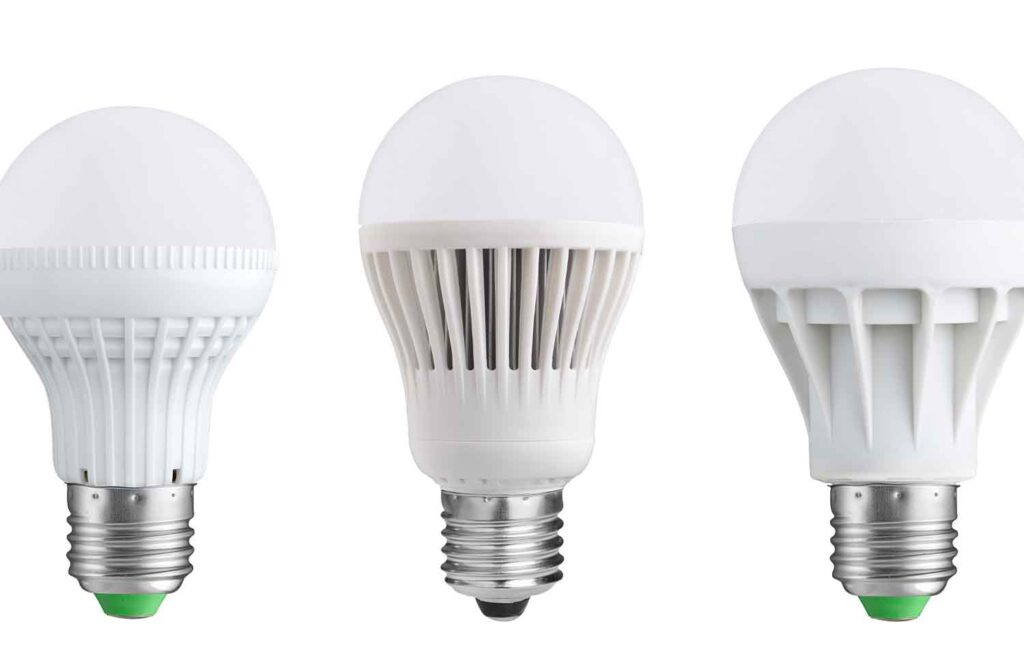Why Do My LED Light Bulbs Keep Burning Out?
If you’ve done your research, you may already be aware of the impressive lifespan that LED bulbs have to offer. Under normal conditions, LED bulbs last significantly longer than traditional incandescent and halogen bulbs. So, if your LED bulbs are seemingly burning out before their expected lifespan, this is a clear indication of issues with the fixture or bulb itself.
Reasons why your LED light bulbs keep burning out include having too high a voltage in your electric system, bad connections in the fixture, overheating of the LED’s components, issues with dimming components, or simply that the bulb is of poor quality. Some investigation will be necessary to diagnose the root of the problem, which will then allow you to carry out the appropriate fix.
What is an LED Bulb and How Does it Work?
LED bulbs are a modern type of bulb that work in a different way to older traditional bulbs. LED stands for Light Emitting Diode, in reference to the light-producing component that LED bulbs contain.
Traditional bulbs all use wires and/or gases to produce light. For instance, an incandescent bulb works by heating up a small wire filament that it contains; the filament becomes so hot that it begins to glow, causing the bulb to light up. Halogen bulbs work similarly, having a wire filament that heats up; these bulbs also contain gases that enhance the light that the filament produces. Fluorescent lights are long tubes of gas that light up under an electrical charge.

LED light bulbs, on the other hand, do not involve these traditional components. In LED lighting, a driver and other electrical components control a microchip within the bulb. When electricity passes through the microchip, it illuminates the bulb’s LED light sources, causing the bulb to give off light. This mode of operation means that LED bulbs only generate a fraction of the amount of heat that other bulbs give off.
Do LED Light Bulbs Burn Out?
No, LED light bulbs do not burn out in the traditional sense as they are physically incapable of doing so. As we’ve explained, they do not involve heat, gases, or wires to light up like traditional bulbs; because they lack these components, there is no way for an LED bulb to burn out like a traditional bulb would.
Being an electrified object, LED bulbs do produce some heat. However, this is nowhere near the amount of heat a traditional bulb would produce. The only part of an LED bulb that produces significant heat is the microchip which it contains. And, any heat that the microchip does produce passes through a heat sink; this part distributes the heat evenly around the entire bulb, bringing the overall temperature down to a minimum. As such, it is essentially impossible for an LED bulb to burn out.
What Causes LED Light Bulbs to Burn Out?
To summarise, the most common causes for LED lights burning out are as follows:
- High voltage in electric system
- Bad connections in light fixture
- Components in LED bulb overheating
- Issues with dimming components
- Faulty or low-quality bulbs
We explain each of these potential issues in more detail throughout the remainder of this article.
Cause #1: High Voltage in Electric System
Multiple LED bulbs burning out rapidly over a few months indicate that your home’s mains supply may be too high. If this is the case, you may also notice that the bulbs are shining more brightly than they should be.
For properties in the UK, the electricity supplied by the mains should remain around 230V at 50 Hz. The electrical supply to your home will be too high for the outlets and appliances if it exceeds this amount. Consequently, the overpowered voltage will damage your light fixtures, causing your LED bulbs to burn out prematurely.
What to Do:
If you suspect that your mains supply is too high, you have two options. You can contact an electrician, who will test the voltage and determine if it’s too high. Alternatively, you can contact your electrical supplier directly to identify and correct any issues with your mains supply’s voltage.
Cause #2: Bad Connections in Light Fixture
LED light bulbs will keep burning out if there are any bad connections in the light fixture. If the connections are too loose, too tight, or damaged, any of these issues can cause the bulbs to burn out prematurely.
Loose or improperly connected LED bulbs will receive intermittent voltage from the power supply. This can initially cause the bulb to flicker, before burning out completely. Conversely, if the bulb is screwed in too tightly, it can damage the socket tab; this is a small metal tab that carries current to the bulb. Other potential issues include having worn contact points or a loose wire connection within the socket.
What to Do:
Carry out the appropriate fix for the issue you’re dealing with:
1. Bulb is too Loose in Socket – Tighten the bulb in the socket until it fits more snugly with the contact points. Ensure not to overtighten the bulb as this will also prevent it from working properly.
2. Bulb is too Tight in Socket – Unplug the fixture or switch off the relevant breaker to cut power to the light. Remove the light bulb to inspect the socket tab; if it’s bent, use pliers or a pair of tweezers to adjust the tab to a 20 degree angle.
3. Contact Points are Worn or Corroded – If the contact points are worn or corroded, you’ll need to get a new fixture or replace the socket entirely.
4. Socket Has Loose Wire Connection – It’s best to contact a qualified electrician to fix any loose wire connections. This isn’t a fix you should attempt yourself unless you have the proper knowledge and experience with electrical work.
Cause #3: LED Components Overheating
The components within an LED bulb are vulnerable to overheating in some circumstances. As it would with traditional bulbs, overheating will eventually cause LED bulbs to burn out.
Unlike traditional bulbs, LED bulbs don’t involve heat in their production of light. On the one hand, this makes them less susceptible to overheating than other types of bulb. However, in some circumstances the components with an LED bulb are still very prone to overheating. For example, an LED bulb can overheat if you use it in an enclosed fixture not designed for LEDs. Another potential way an LED can overheat is if the bulb is too large for the fixture.
What to Do:
Make sure that the LED bulbs are the correct size for the fixture to allow proper ventilation around the bulb. In enclosed or semi-enclosed fixtures like recessed lighting fittings, ensure to only use LED bulbs rated for these fixtures.
Cause #4: Issues with Dimming Components
If the LED light bulbs that keep burning out are in a dimmable fixture, the dimming components may be to blame.
Although you can use LED bulbs in dimmable lighting fixtures, not every LED bulb will be compatible with every fixture. Standard LED bulbs lack the necessary components to be dimmable. Also, old dimmer switches won’t work with the typically low wattage of the more energy efficient LED bulbs. A standard bulb in a dimmable fixture and/or controlled by an old dimmer switch may work temporarily; however, it will inevitably lead to issues like high-pitched buzzing noises, light flickering, and ultimately the LED bulbs burning out.
What to Do:
To avoid LED bulb burn out and other issues with dimmable fixtures, follow these two directions:
1. Use Dimmable LED Bulbs in Fixture – Ensure that you use LED bulbs specifically compatible with dimmable fixtures. The bulbs you choose must state that they are dimmable on their packaging.
2. Connect Fixtures to LED Compatible Dimmer Switch – Upgrade your dimmer switches to LED compatible switches. These switches are specially designed to work with the lower wattage of LED bulbs and fixtures.
Cause #5: Faulty or Low-Quality Bulbs
One bulb or several LED bulbs that burn out consecutively may simply be down to a bad batch of bulbs. This is likely if you purchased the bulbs at the same time or they all came from the same manufacturer.
Faulty bulbs can occasionally slip past quality checks, or they may get damaged along their way from factory to shop. For whatever reason, you won’t have any luck with the other solutions if you’re only using bulbs from a bad batch.
What to Do:
Check the warranty on the packaging of the LED bulbs you suspect to be faulty. If they’re within warranty, contact the retailer or manufacturer from which you purchased the bulbs to enquire about a refund. You should then replace the bulbs with new ones from a more reputable manufacturer.





